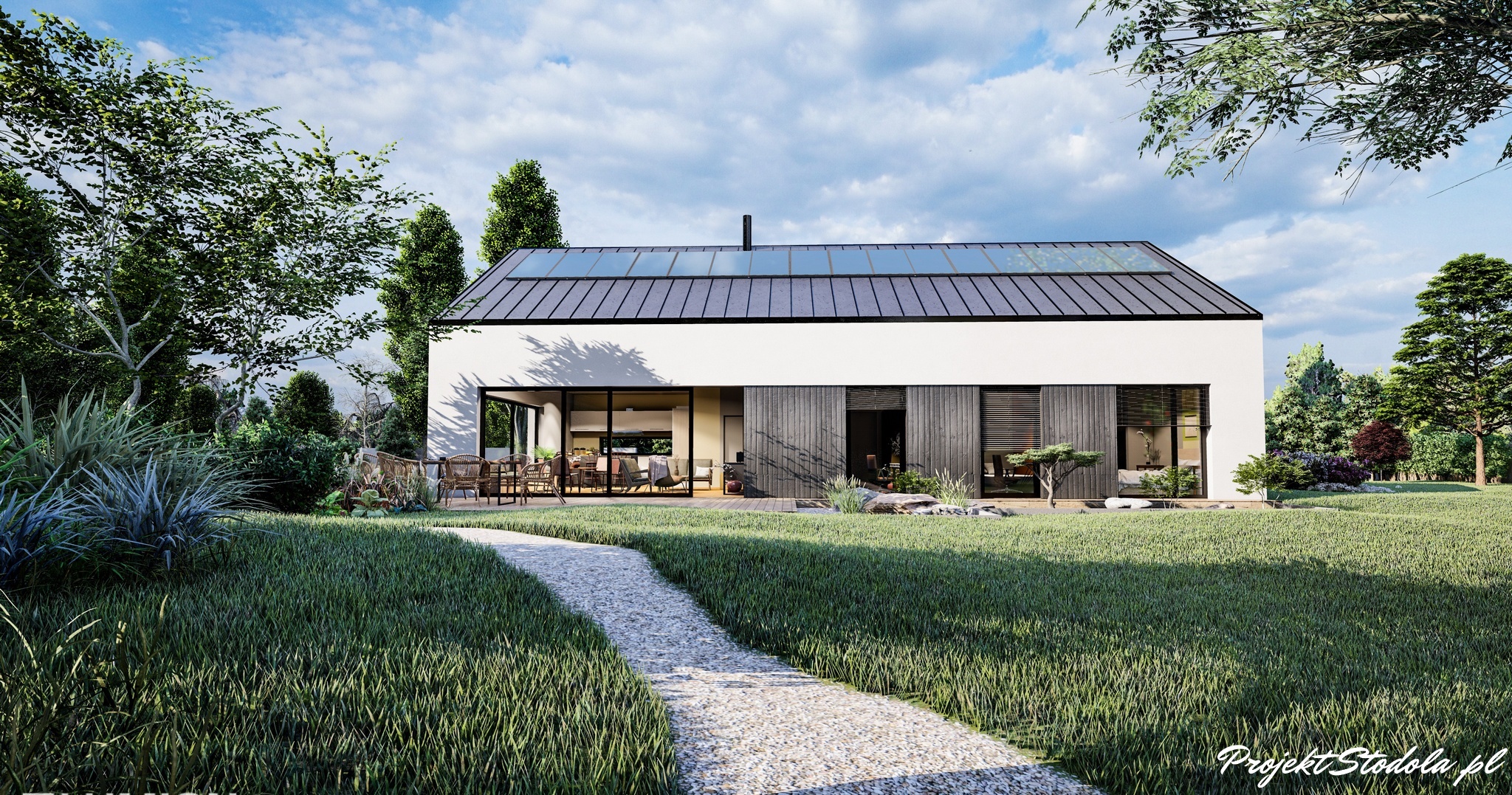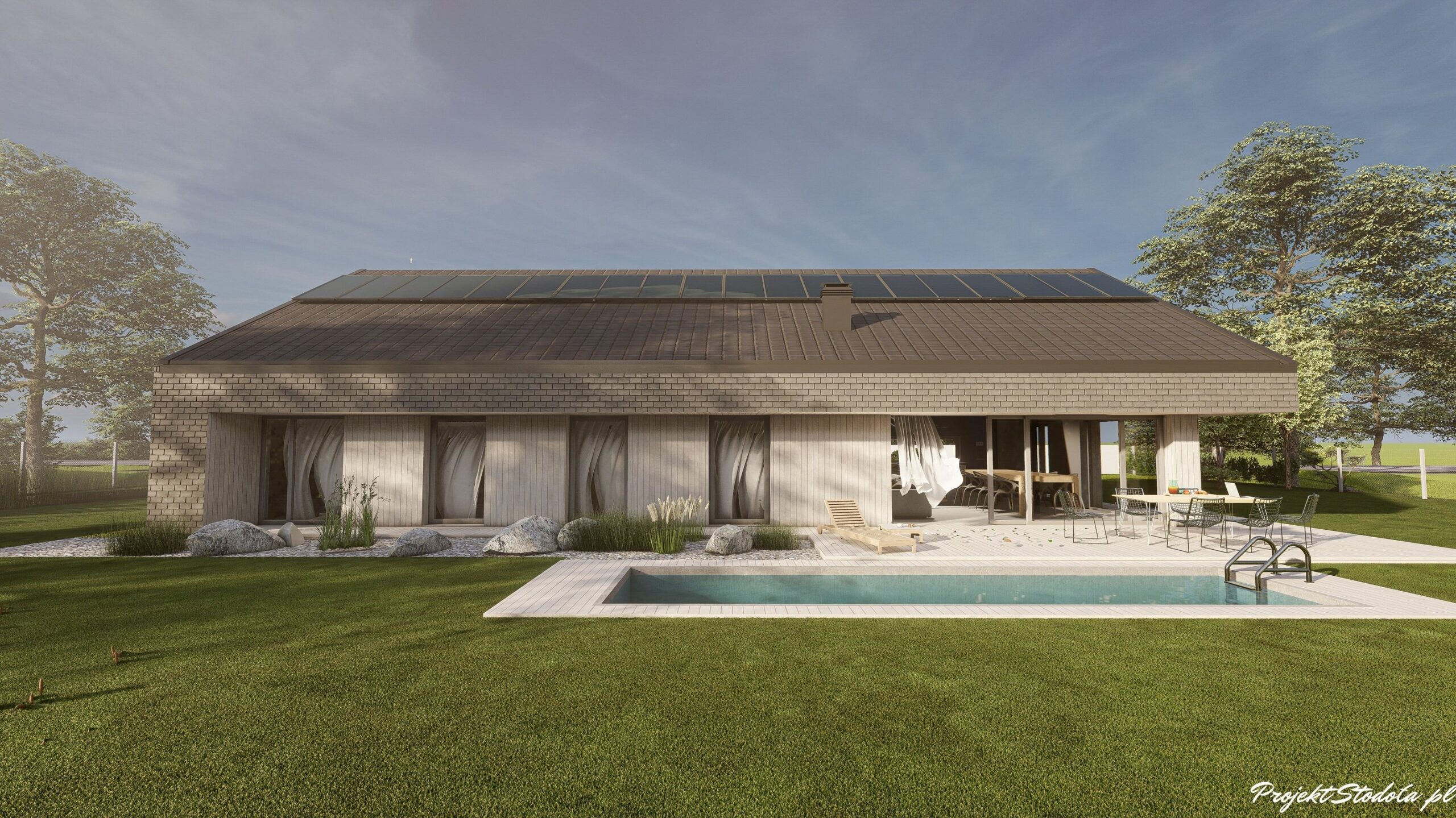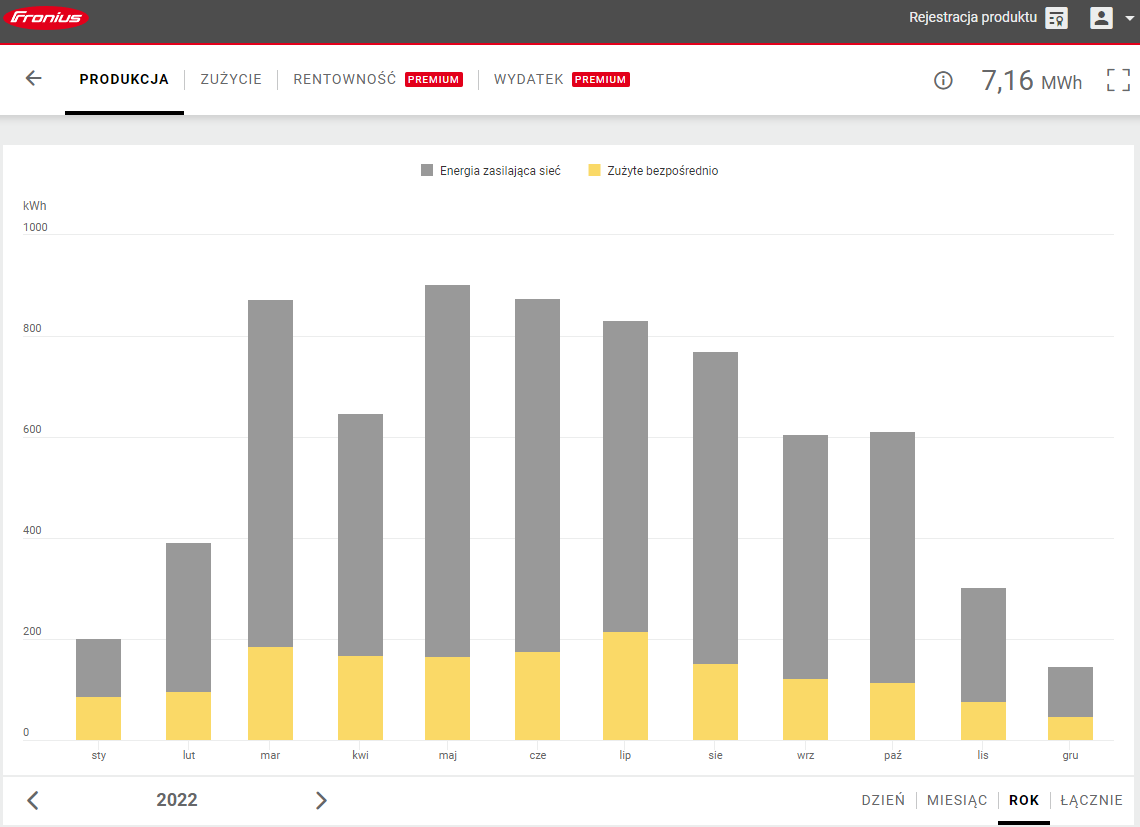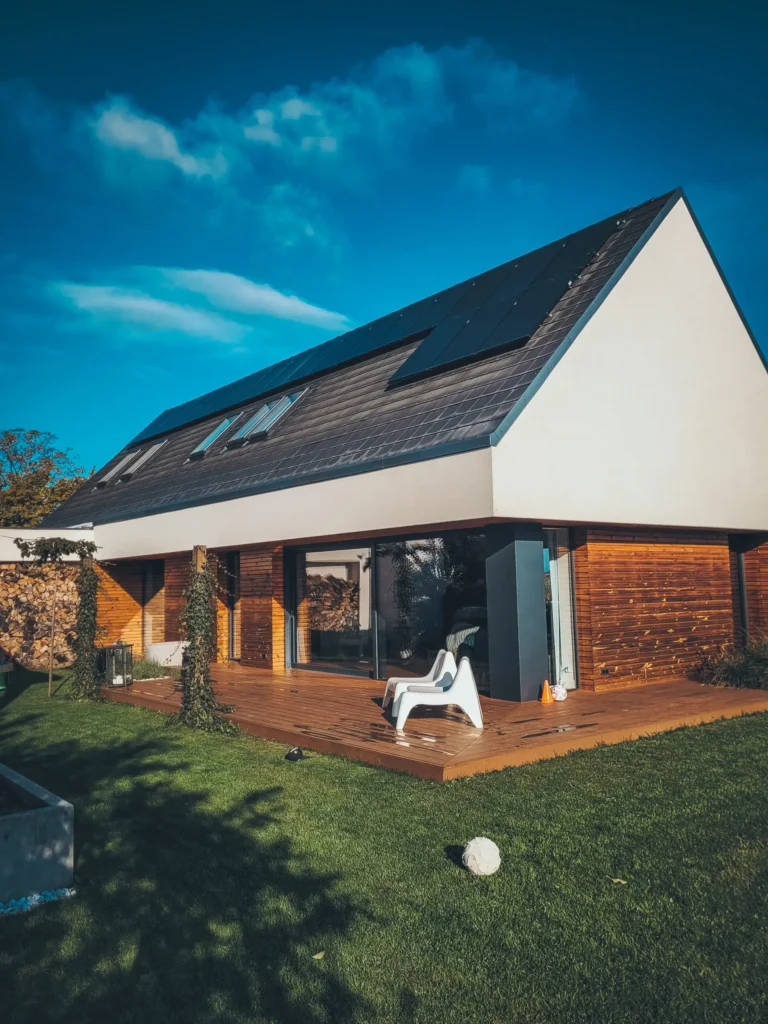Hi! We’ve prepared our annual post: solar photovoltaics 2023. It’s our summary of our experiences and production so far, as well as our outlook for the future. This year marks 4 years since we’ve had our solar installation. Because of that, we’ve decided to summarize not only the past year of 2022, but all these 4 years and how the solar installation has been functioning. Four years is already a good testing ground. I hope these results will allow you to answer the questions that concern everyone considering investing in solar photovoltaics.
- How much electricity does a photovoltaic installation produce?
- What is the cost of maintaining the installation – inspections, etc.?
- How does it balance with energy consumption?
- What are the prospects and current billing systems?
- What is the return rate for such an installation according to the old and new billing methods?
Our installation is relatively small. It’s a 6 kWp system, but positioned in the best possible way – on a roof slope facing south. This positioning maximizes the benefits, resulting in the most advantageous photovoltaic production. The annual production amounts to approximately 7 MWh, which is 7000 kWh. Good building orientation is crucial for energy-efficient buildings – in short, we aim to minimize energy loss while maximizing production. Another important aspect is having a simple roof structure to accommodate the panels. It’s also great if this can be done aesthetically.




More information about photovoltaics installation you can find here:
The size of the installation of 6kWp of our photovoltaics, was due to the fact that we got a subsidy for the installation and those up to 6 kW were promoted. Anticipating questions, the subsidy was huge, as it covered as much as 85% of the price of making the installation. It was a regional program for the Lower Silesian province, where different elements of the building were scored, and it was not so easy to qualify, the recruitment process was quite complicated. Fortunately, we succeeded, because this type of program, with such an amount of funding will probably not happen again, which is a pity.
Despite the relatively small area of the photovoltaic installation, it provides us with a very large energy production. One year it amounts to about 7 kW.

Our photovoltaic installation consists of 20 panels of 300 watts and a Fronius 6 kW inverter. The billing system that applies to us is the “old” prosumec system called net-metering. We plan to expand the installation, but due to the subsidy, it must be 5 years after installation. Very importantly, by expanding the installation, we will still be on the old prosumec system of so-called net-metering.
Why do we want to expand when this installation already covers our demand fully? We are thinking about it in the context of charging an electric car, for example.
Fotovoltaics 2022, or rather the 4 previous years.
For full production information, we need consumption and what appliances we power. To summarize the most relevant ones: we heat the house with an air source heat pump, we have a recuperation system and air conditioning, other appliances agd- in the standard range, among others: washer, dryer, dishwasher, 2x counters, induction hob….
Net-metering is based on storing energy in the power grid, that is, when we produce more and do not use this energy immediately, we give it back to the grid manager (we to Tauron), and during periods when we have no production, we can collect 80% of the energy we produce.


Above in the table we publish the total production and consumption. As you can see, in each year with photovotaics our electricity bills were really low. Only in the pandemic year of 2020 we paid electricity bills of about PLN 860/year. (You can find a summary of the pandemic year in the entry: Photovoltaic installation: 2020 summary)
In the passing 2022 we produced 7160 kWh. 1620 kWh we consumed directly/immediately, and 5540 kWh we gave back to the grid (from which we could then take 4432 kWh). This gave us 6052 kWh (i.e., what we consumed directly and 80% of the energy produced that we can take back at other times). Our actual energy consumption in 2022 was 5450 kWh. That is, the production from photovoltaics covered it fully, and even more than that, 602 kWh.

Fotovoltaics 2023 return of investment
Pay attention to the last column Savings. This is the column that shows how much PLN we saved on electricity by having photovoltaics. Thus, in 2022, without photovoltaics, we would pay PLN 4511.41 for electricity (plus fixed charges, but we omit them from all calculations, because we would always pay them).
So we estimated, using our example, the payback time for a similar photovoltaic installation. This is the amount we would spend on electricity if we did not have a photovoltaic installation, i.e. our consumption x the cost per kWh. We assumed the cost of the installation on the basis of quotes from friendly companies, with good components, and it is rather of the higher ones. Accordingly, it amounted to PLN 31,017, and assuming the existing PLN 5k subsidy from the My Electricity program and the thermo-modernization allowance, it would be PLN 21,320. The rate of return is for our 6kW installation with our consumption from the table.

As you can see, the higher the consumption and the more expensive the electricity and the cost per kW, the greater the savings, thus the faster the return on investment, especially after taking into account subsidies.
This is the rate of return for photovoltaics 2023 under the so-called old rules. But as we know, from April 2022, all new installations are billed under the new net-billig system. Does it still come out as favorable?
Fotovoltaics 2023. Simulation
Since last April, all installations in Poland have been billed under the new net-billing system. It consists of selling and buying energy. That is, energy that is not used on an ongoing basis is sold as if we were a power plant, that is, at the wholesale price. Then, when we need energy, we just buy it, but no longer at the wholesale price, but at the retail price. So the whole thing is based on trade and the difference in prices. The wholesale price for electricity, especially when Poland still produces most of its energy from coal (that is, the cost of producing it is high), is relatively high (at least it was so in 2022). Which made it very profitable to sell the energy produced.
We analyze the last months of 2022. The selling price was high (the average of the last 6 months of 2022 was 0.75gr/kWh), which made the situation extremely attractive for owners of photovoltaic installations.
We did a simulation for 2023.We made our assumptions (based on data from 2022- production, consumption, cost of installation of 6 kW).
However, the method of billing and how much we will gain in net billing is not easy to predict, because these are estimates. We don’t know what the price in the wholesale energy markets will be, which depends on many factors, and this mainly affects savings. This price also changes every month. (We for the calculation took the average of the last six months- 0.75gr/kWh)
In addition, in the current year 2023, the “shield” will continue to operate, which means that with an energy limit of up to 2,000 kWh, the purchase price of energy will be 0.74 zloty/kWh, and everything above 1.22 zloty/kWh (this is the average price of electricity and distribution, including VAT, for the G11 tariff as of 1.01.2013).
That is, the result now is all the more favorable.

Is solar photovoltaics profitable in 2023?
The simulation shows that the rate of return, given the energy amounts (sales amounts are estimated) in 2023, is still very favorable. The installation of photovoltaics would pay for itself after 7.5 years or even after 5.13 years taking into account the subsidies still available. This is a very good result.
However, the question arises as to what will happen in the next few years, especially when all state aids cease to apply and households realistically face the energy crisis (and not just businesses, which are currently paying horrendous bills).
Despite the fact that the way of “net- billing” is less favorable, in fact, if we are talking about savings, that is, what we did not have to pay for and the rate of return, the high energy prices (and the stable cost of photovoltaic installation) make photovoltaics a profitable and very good investment, because the more expensive the electricity is, the more we simply save, and the installation pays for itself faster.
We have done various simulations and even if the value of the selling price of energy will be half as much as the purchase price of energy, the rate of return is still attractive and oscillates around 6 years with subsidy and 8 without subsidy. The smaller the difference between the two, the more favorable it will be for the owner of photovoltaics on the new billing system in force in Poland.


Photovoltaics 2023 How to save the most?
What can be done to make photovoltaics pay even more?
It is very important to increase self-consumption, that is, to use direct energy as soon as it is produced, because then we pay nothing for it. What we produce and consume right away is ours. How to accomplish this? By being smarter about energy consumption at the time, e.g. heating the water, running the heating, or at least setting the washing machine, dryer or dishwasher so that it runs during the day rather than at night (we ourselves tend to turn on appliances when we need them instead of planning, but it’s a matter of habit, which can be developed, especially since most appliances already have a function such as delayed start). Of course, the best way to increase self-consumption is by, for example, installing energy storage or optimizers, but more on that soon.
What do you think about the current form of billing? Are you considering installing photovoltaics?
Be sure to let us know in the comments. In our next post we summarized the air heat pump, its consumption and our experience with it. For those interested in the topic, it can be found here:






Leave a Reply